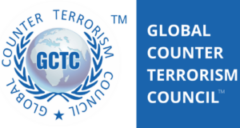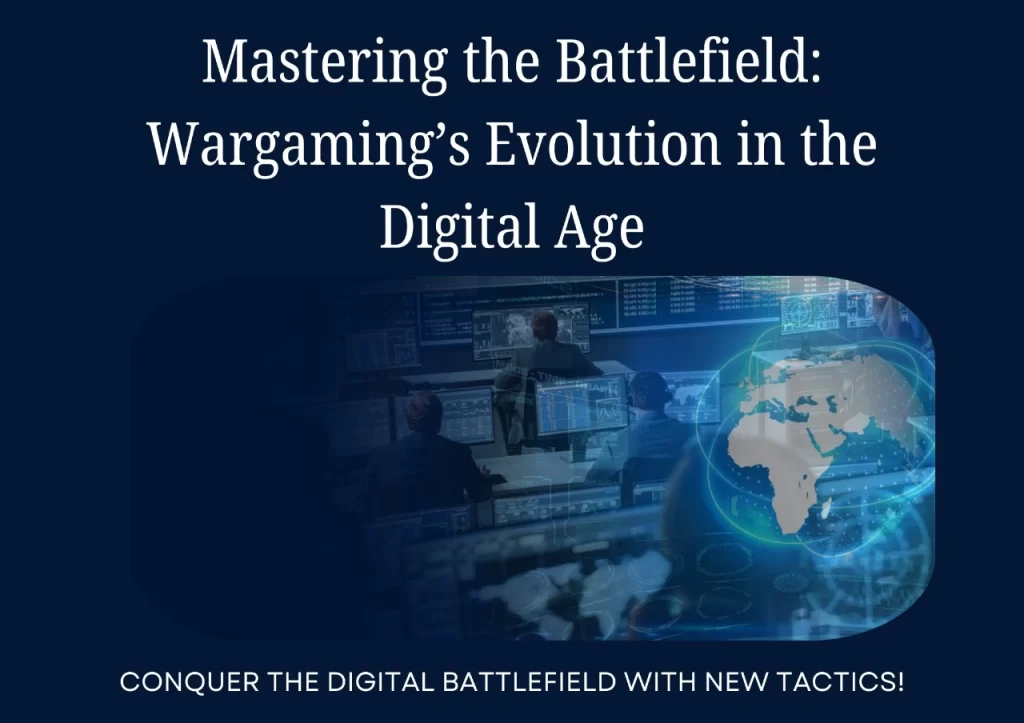Introduction
The history of wargaming is rooted in ancient times, with the Indian game ‘Chaturanga’ considered a precursor that emphasized anticipating consequences (Kainikara, n.d.). The first of the military games also came from China called ‘Wei-Hai’ (encirclement), now known as ‘Go’. From this history, in the late 1700s, Prussian war counselor Baron von Resswitz is credited with ushering in modern war games in 1811. As it has seen utility since the wars of antiquity, wargaming, encompassing strategic simulations and exercises, has always been utilized by military and political leaders to explore scenarios, test strategies, and enhance decision-making (Rothweiler, 2017).
The goal of wargaming is to improve strategic thinking, preparedness, and assess potential outcomes in conflict or crisis situations through the use of basic concepts based on stimulation, gaming theory and net assessment. Formats range from traditional board games to computerized simulations, providing immersive environments for visualization. Used extensively in the Armed Forces, wargaming explores ideas, tests concepts, and enhances strategic thinking. Military war games can be categorized as analytical, aiding high-level policy formulation, or educational, focusing on skill development at tactical levels. Wargames, simulations, and exercises are distinct yet interconnected concepts in the military context, serving specific functions in strategy-making theory, practical applications, and readiness assessment. Each contributes to military decision-making, analysis, prediction, and personnel training within the military domain. Wargames help shape policy development and technology investment. Wargames allow policymakers and military strategists many avenues to test different configurations quickly before settling on a specific course of action (Grossman, 2023).
Advancing Military Preparedness through Wargaming
Wargames are excellent instruments for military training and preparation, providing a link between theoretical planning and real execution. Wargames provide important lessons and insight that could be applied to actual military exercises by replicating realistic scenarios and allowing military personnel to test strategies and make decisions in a controlled environment. Wargames can help commanders and decision-makers analyze the effectiveness of different plans, evaluate troop and equipment performance, and identify areas for improvement.
Wargames also help in messaging regarding capabilities for deterrence to potential adversaries. The US Naval War College developed wargames in the 1920s and 30s to simulate the Pacific theater’s growing importance (Caffrey Jr., 2019). NATO’s 2023 wargaming program intends to better comprehend the problems that the Alliance’s armed force faces, while also boosting leadership through a bilateral initiative between France and Italy (NATO, 2023). India conducts military exercises like Exercise Gaganshakti held in 2018, one of the largest military exercises conducted by the Indian Air Force. It focused on testing the IAF’s readiness and effectiveness in a high-tempo operational environment and Exercise Vayu Shakti to improve strategic capabilities and inter-service coordination. Bilateral exercises like Malabar Exercise with the US, Japan, and Australia enhance cooperation and interoperability. Exercises like Indra between the Indian and Russian armed forces, the Yudh Abhyas between India and US and many more have come to the fore.
Wargaming plays a vital role in enhancing operational capabilities in India by focusing on personnel management, strategy making, logistics, and interoperability, rather than solely on attack capabilities and firepower. For instance, the Indian Air Force conducted “Exercise Gagan Shakti” in 2018, which not only showcased air power but also tested logistical capabilities and rapid deployment strategies (Ministry of Defence India, 2018). Additionally, the establishment of integrated theatre commands aims to improve jointness and interoperability among different branches of the military, enabling more coordinated responses to security challenges. Furthermore, initiatives such as the Defence Innovation Organisation foster innovation in logistics optimization and operational efficiency (Defence Innovation Organisation, n.d.). Participation in international exercises further enhances interoperability and facilitates the sharing of best practices. Through these initiatives, wargaming in India contributes to a comprehensive approach to military readiness, ensuring effective responses to diverse security threats while prioritizing personnel management, strategy making, logistics, and interoperability. The skills and experiences learnt during wargaming sessions can then be applied directly to real-world military exercises, improving readiness, coordination, and effectiveness in dealing with varied obstacles and scenarios. Wargames play an important role in ensuring armed troops are well-prepared and capable of efficiently executing their mission.
The Role of Emerging Technologies in Wargaming
Communications technology as a means to supply even diffused forces with the most up-to-date information ensures that forces are more informed and hence more likely to make sound decisions. Effective combined operations require a number of varying but competent forces to work together. A centralized C4ISTAR, as implemented by US infrastructure as part of the NCW doctrine (Robb, 2014), could coordinate such joint operations and serve as a hub for communication with and direction of any unit in the theatre, from the Indian Special Forces to an Integrated Theatre Command. In its entirety, Network Centric Warfare involves the integration of sensors, decision-makers, weapons platforms, and support capabilities that promote agility while ensuring interoperability and collaboration between services (Robb, 2014).
Network Centric Warfare (NCW) makes effective use of new doctrine, processes and technologies that creates effective and speedy sensor and communications layout (Kainikara, 2008). Technology is being used as a multiplier and has been employed to be the way forward in warfare. The main difficulty is to identify the correct combination of technologies that will enhance the present potential within the existing forces. In view of the continuous changes that are taking place in the basic concept of operations, a concrete and adaptable framework for wargaming will have to be developed, taking in focus the current availability. NCW’s vitality requires the use of innovative methodologies, taking in account its validity in wargaming in order to take the appropriate lessons from it (Kainikara, 2008). NCW has led to a transformation of the wargaming table, highlighting the increasingly fluid and non-traditional nature of 21st century warfare.
In the twenty-first century, the incorporation of novel technologies such as Augmented Reality (AR), Virtual Reality (VR), Network Centric Warfare (NCW), and Psychological Operations (PsyOps) has significantly improved India’s wargaming capabilities. These innovations have transformed the landscape of military exercises and simulations by creating immersive and lifelike training environments for people. AR and VR devices enable soldiers to participate in virtual combat scenarios, providing hands-on experience in a controlled environment. Integrating PsyOps approaches into wargaming exercises enables the simulation of psychological warfare scenarios, giving military personnel the tools they need to understand and fight opposing propaganda and manipulation operations. Together, the introduction of these cutting-edge technologies has transformed wargaming in India, raising the effectiveness of training programs and improving readiness to handle a range of security challenges.
The Virtual reality wargames are powered by Artificial Intelligence and the first of its kind simulation-based training center “WARDEC” has been established in a military zone in India (DDE, 2022). The focus is to teach military strategy to its officers through the interface. The metaverse, which combines virtual reality (VR) and augmented reality (AR) to mimic its surroundings, will put soldiers’ skills to the test (DDE, 2022). AI is used to take into account factors like terrain slope, weather, time, air pressure, enemy observation range, artillery range, troop position, soldier health, and enemy reaction capabilities.
Modern technologies such as AI, simulation modeling, big data, and many more are also being inculcated in wargaming. These technologies work together to make wargames more accurate, data-driven, and effective, hence increasing military preparedness and readiness.
In the realm of Indian military wargaming, prospective AI applications encompass a wide range of crucial domains aimed at improving training efficacy and decision-making processes. AI will play an important part in creating realistic scenarios by modeling many aspects such as topography, weather, and adversary conduct in order to give military personnel unpredictable and difficult training conditions. Decision support systems powered by AI algorithms can evaluate massive datasets quickly, providing useful insights during wargaming exercises and assisting commanders in making informed decisions. AI integration in wargaming includes building intelligent and adaptive enemies, boosting logistics and resource management, and modeling cyber threats to provide comprehensive cybersecurity training. Furthermore, AI-driven strategic analysis can aid in identifying advantages and disadvantages in military strategies, allowing for the improvement of doctrine. Specific platform simulations, such as those for military vehicles, aircraft, and naval vessels, use AI to improve training proficiency, while human-machine teaming allows for flawless interaction among human operators and autonomous systems within wargame scenarios.
Conclusion
The future of wargaming is likely to be more technologically advanced, interactive, and distributed, with a large degree of conventional and manual elements. Learning objectives can be met through both traditional wargaming and virtual simulations using emerging technology. Although war games have historically been used as an analytical tool for advanced training, one of their most common applications in recent years has been to examine what concepts, ideas, and capabilities flow from evolved doctrine and are capable of dealing with a variety of future threat scenarios. This is especially evident when emerging technologies or skills are being examined. More specifically, the systems and capabilities are tested against genuine events, both current and futuristic, in order to assess potential. The evolving base of global security allows for wargaming to be an excellent tool for forging the way forward, as well as providing a framework for analyzing the changes occurring in the changing nature of warfare.
References
- Kainikara, S. (n.d.). Effective Wargaming: Impact of the Changing Nature of Warfare. Royal Australian Air Force, Air Power Development Centre. https://airpower.airforce.gov.au/sites/default/files/2021-03/WP13-Effective-Wargaming-Impact-of-the-Changing-Nature-of-Warfare.pdf
- Murphy, E. M. (2017, April 6). Wargames & the Scientific Method. Air War College, Air University.
- Bae, S. J., & Kearney, P. M. (2021, March 8). RAND Cooperation: Use wargaming to sharpen tactical edge. https://www.rand.org/pubs/commentary/2021/03/use-wargaming-to-sharpen-the-tactical-edge.html
- Downes-Martin, Stephen and van Creveld, Martin (2014) “Wargames: From Gladiators to Gigabytes,” Naval War College Review: Vol. 67 : No. 4 , Article 11.
- Samuel S (2023, June 26) The Art and Science of Wargaming: A Comprehensive Overview https://www.linkedin.com/pulse/art-science-wargaming-comprehensive-overview-samuel-sheffield-ms
- Caffrey Jr., M. B. (2019). On Wargaming: How Wargames Have Shaped History and How They May Shape the Future. Newport, Rhode Island: Naval War College Press.
https://digital-commons.usnwc.edu/cgi/viewcontent.cgi?article=1043&context=newport-papers
- Robb, J. (2014, January 9). Modern Militaries and a Network Centric Warfare Approach. E-International Relations.
https://www.e-ir.info/2014/01/09/modern-militaries-and-a-network-centric-warfare-approach/
- Allied Command Transformation. NATO’s 2023 Wargaming Initiative
- Grossman, T. (2023, March). The Promise and Peril of Wargaming. CSS Analyses in Security Policy. https://css.ethz.ch/content/dam/ethz/special-interest/gess/cis/center-for-securities-studies/pdfs/CSSAnalyse319-EN.pdf
- Press Information Bureau, Government of India, Ministry of Defence, 24-April-2018 Conclusion of Exercise Gaganshakti-2018
- Ministry of Defence. Azadi Ka Amrit Mahotsav G20-India-2023. Raksha Mantri Shri Rajnath Singh to inaugurate DefConnect 2024 to encourage indigenous defence innovation. 03 MAR 2024. PIB Delhi
- Defence Direct Education (2024, March) AI-powered Metaverse training for Indian Army Troops
https://defencedirecteducation.com/2022/05/27/ai-powered-metaverse-training-for-indian-army-troops/
Author : Arushi Jain, Research Coordinator, GCTC

She has done her under-graduation from OP Jindal Global University in BA Global Affairs with a specialisation in Defence and Security. As a research intern, she has worked in thinks tanks namely Institute of Defence Studies and Analyses IDSA and Centre for Land Warfare Studies CLAWS. Her core areas of interest are military affairs, counter terrorism, national security and diplomacy.




